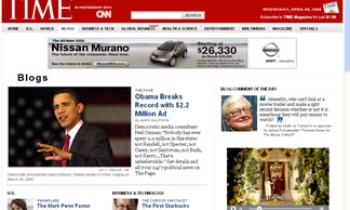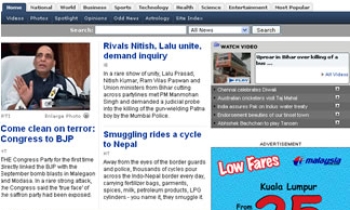Making the most of digital broadband interactivity requires an understanding of new consumer behavior and preferences that already are challenging media's major players and much of the industry's conventional wisdom.
The traditional consumer demographics that have defined success in the television, film and print media businesses are but a starting point in a new era in which respecting the deeper data now available about user motivations, partiality and economics is imperative to making money.
Traditional media's transformation will depend more on companies' willingness to alter their attitude and use of more effusive consumer analytics than on the Internet properties they align with or buy. Unless media companies begin to heed the more sophisticated user data bank available, and place the interactive consumer first by understanding who they are, even the biggest are doomed to fail.
The power of this mind shift can't be overstated.
Even media companies loading up on newly developed, acquired or aligned digital broadband and Internet operations can't proceed on the basis they always have with their more traditional media. There is little excuse for relying on a neophyte level of consumer-profile information in a click-through world in which consumer use and relevancy are easily tracked on aggressive newer and transformed older platforms that respect and mine the value of consumers' instant acceptance, rejection and related links.
The emerging media world is, after all, more about the consumer than it has ever been because interactive users -- not media companies -- now drive demand. It is increasingly about customized, individual products as well as differentiated content and services rather than the products championed by networks, studios, publishers or media titans, per se.
Until now, media and entertainment companies turned out whatever films, television programs and other traditional media they deemed worthy, and spent half as much as their production costs in marketing trying convince consumers they will love it.
Advertisers buy in to an estimated mass reach in traditional media that, while questionable, still flourishes on broadcast, cable TV and other media for lack of a better alternative measuring system. Even if the current ratings and demographic system in place is expanded to measure consumer use and advertiser effectiveness of DVR-like homebound technology, as has been discussed among TV's major players, it would be many months and platforms away from matching online and digital broadband user data exploding in a marketplace of competitive possibilities.
For instance, Google said Monday that it is offering a free Internet analytics tool that will track all the particulars of how, when and where consumers use any Web sites, content and advertising, and how that relates to other potential Internet options.
At the same time, Nielsen Media Research said that it will expand its Internet due diligence team just to consider whether it should work with Arbitron to develop Portable People Meters that will render TV audience measurement not too different from its historical base.
While that limited, estimate-based audience measurement system continues to govern television today, its days are numbered if for no other reason than what is fast becoming the universal digital broadband platforms that link media content and services to devices to consumers to advertisers.
That ultimately raises the issue of whether traditional media strapped with more limited measurement means will lose their initial share of new-media-generated wealth by providing advertisers, content providers and consumers little instantaneous, relevant information.
If such companies as Google and Yahoo! are succeeding, it is because they are assisting consumers to locate, retreat and manage the content and services dear to them. They are paying attention to and acting on new user and advertiser analytics. That can't start too soon.
For instance, a recent Forrester Research report by analyst Rebecca Jennings concluded that established paid-online content still only attracts 16% of online consumers in the U.K. because of the lack of flexibility regarding payment methods, moving purchased content around on other of their own devices, and support services. While broadband users are more willing to pay, about two-thirds of European consumers who have dozens of legitimate paid-for content sources "remain unconvinced of paid-for-content's value," the Forrester report says.
The implications of this and other similar analyses is clear. Consumers will access more media than ever to download and transfer to other devices and manipulate through their digitally enabled social networks.
But that will not translate into new revenue unless media companies can verify consumer demand, use and related networking with new analytics -- a matter that is woefully underestimated by most traditional media players.
Entities such as MTV Networks and ESPN that have thrived on lucrative niche industries are already leading in the digital broadband world that has strengthened their hand by acquiring and creating interactive services that generate lucrative new revenues because of instant consumer accountability.
Such entities as MTV Networks and ESPN that have thrived on lucrative niche industries already are off and running in the digital broadband world that has strengthened their hand. MTV Networks is acquiring the facilitating services they need to make their content more relevant at a time when portable electronic communities are everything -- and that's not only e-mail and chat but also personal photo books, blogs and content-exchange sites. The possibilities here will be endless. ESPN, long an innovator among its cable industry peers, continues to create services to make its digital broadband experience more customized. Yahoo! has acquired and developed tagging services such as My Web 2.0 to create a linked marketplace of common interests and values, and Upcoming.org to create a linked universal social calendar for friends. And that's just the intriguing beginning of bankable services.
The jury still is out on how well companies like News Corp. will integrate and use important costly acquisitions such as MySpace.com and IGN Entertainment to understand, mine and interface with the wealth of data and services catering to interactive consumers' specific needs and interests.
Likewise with the first recent baby steps to transplant existing media onto a digital broadband platform, ABC, NBC and CBS aren't sure what to expect from offering select series as paid on-demand products on iPods, satellite and cable TV that have been unveiled with much fanfare during the past month.
So far, early, robust returns suggest heavy early adapter influence.
For instance, Apple has been quick to declare that it sold its first 1 million video downloads -- ranging from episodes of ABC's "Desperate Housewives" to Pixar animated shots -- for $1.99 a pop in less than a month.
Forrester analyst Josh Bernoff estimates that even with 5% of the fan base for "Housewives," which draws 25 million-plus viewers to the network on Sunday nights, the iPod replays could generate $1.5 million in addition to the $11.3 million in advertising revenue, with the iPod delivering triple the per-user/viewer value.
Eventually, advertising-supported on-demand will take over as a main selling point for cable, satellite, telephone and portable-device makers seeing to sell bulk or bundled content access -- another way to get the consumer to pay up. The most recent new entry was Time Warner's weekend announcement that it will run 15-second advertising in the otherwise "free" on-demand access for America Online users to their vintage TV program bank.
Among the troubling aspects to all of this that no one is discussing is that these new ventures reinforce the fact that in a world of many more media and entertainment choices, the best content and service providers can hope for is a sliver of consumer attention and their consumption of the portions of content and services they want -- and are willing to pay for.
Surely the underlying strength of common-interest communities and personalization will give digital broadband niche fare more heft than ever before. Still, as always, there will be limits on consumer time and money, especially in an inflationary economic downturn.
Such trouble global issues also could be explored and addressed by the universal standard of a deeper, more detailed, revealing analytical standard for all digital broadband and Internet users, wherever they are.









